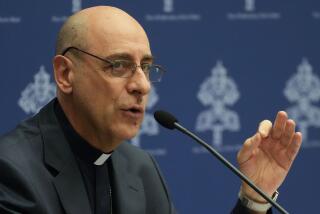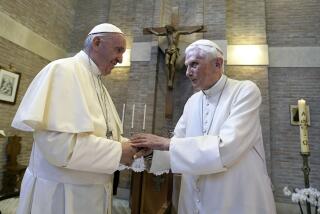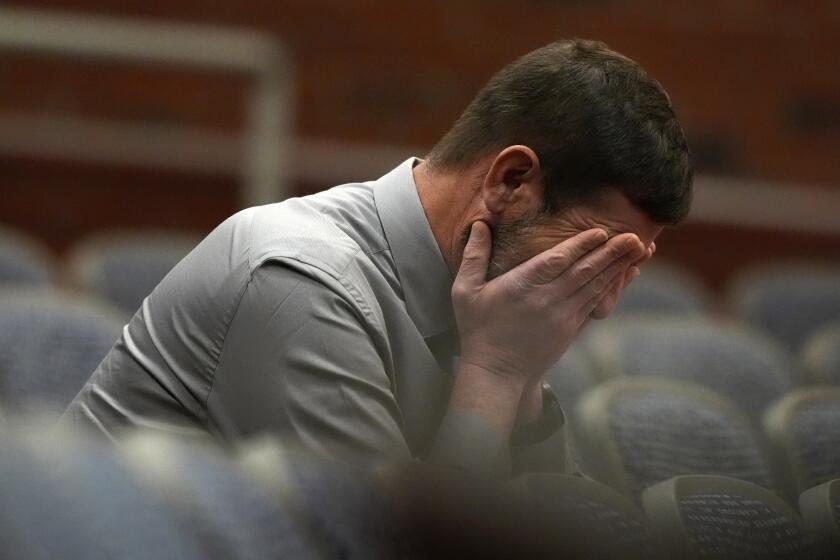Vatican lifts a 700-year-old bum rap
A mere 700 years after the fact, the Vatican on Thursday attempted to set the record straight on the Knights Templar, a medieval military order charged with protecting pilgrims to the Holy Land in the times of the Crusades.
The mysterious order most recently entered the public imagination thanks to the bestselling novel “The Da Vinci Code,” which portrayed the Knights Templar as guardians of the Holy Grail, the legendary cup used by Christ at the Last Supper.
In reality, the Templars rose to become a rich and powerful organization, financiers of regional wars and holders of valuable real estate. But they were destroyed by heresy charges in the early 14th century.
The order’s wealth apparently made it many enemies, including among Europe’s ruling class of the day, and the knights were accused of blaspheming the cross and committing immoral sexual acts.
Pope Clement V, it turns out, found the Templars not guilty of heresy in trials that took place in Rome between 1307 and 1312.
However, King Philip IV of France is said to have pressured the pope to punish the order because the monarch owed it a lot of money. Philip, historians say, spearheaded the campaign against the Templars, arresting and torturing their leaders to extract false confessions.
Acquiescing to the king, Clement suppressed his findings. Members of the Poor Knights of Christ and of the Temple of Solomon (the full name of the Knights Templar) were hounded, killed or forced to flee. Grand master Jacques de Molay was burned at the stake in 1314.
On Thursday at a news conference, the Vatican displayed copies of the parchments that showed Clement’s original decision clearing the Templars of heresy. The immorality charges apparently stood.
The documents are contained in a limited-edition leather-bound volume, 800 copies of which were published by the Scrinium publishing house. One will go to Pope Benedict XVI, and the rest went on sale for more than $8,300 apiece.
Libraries, collectors and “Templar associations” have ordered copies, the publishing company’s officials said, declining to identify specific buyers because of Italian privacy rules.
Clement’s original ruling was squirreled away all this time in the Vatican’s Secret Archives. Researcher Barbara Frale discovered the documents in 2001 and brought them to the attention of Vatican historians and now the public.
Msgr. Sergio Pagano, prefect of the archives, said at the news conference that the release of the documents was “not a scoop” because their existence was known, just not noticed.
“For us, the value is an artistic value -- the colors, the calligraphy,” Pagano said. “This is art and it will be of great value to all lovers of culture who have a historical interest. Plus, they are visibly beautiful.”
--
De Cristofaro reported from Vatican City and Wilkinson from Istanbul, Turkey.
More to Read
Start your day right
Sign up for Essential California for news, features and recommendations from the L.A. Times and beyond in your inbox six days a week.
You may occasionally receive promotional content from the Los Angeles Times.






